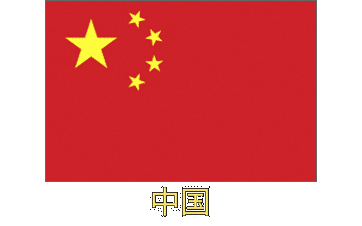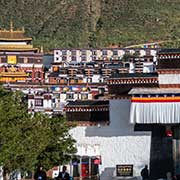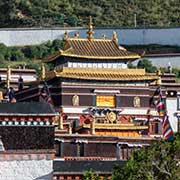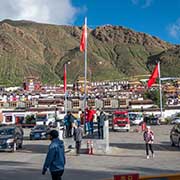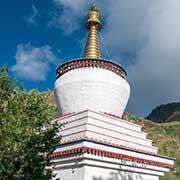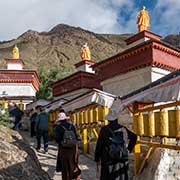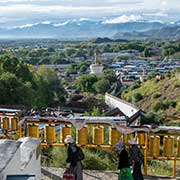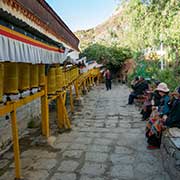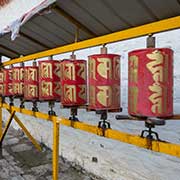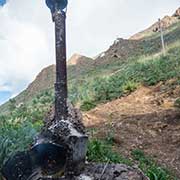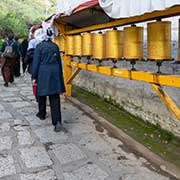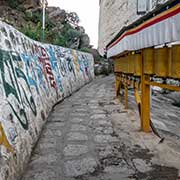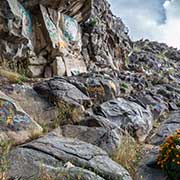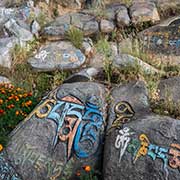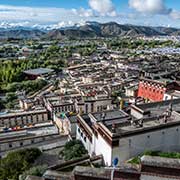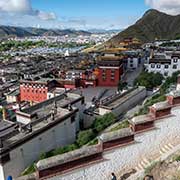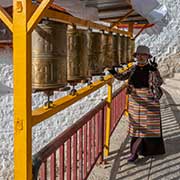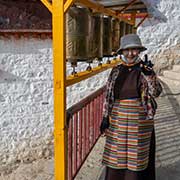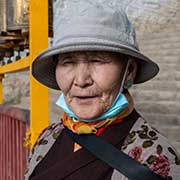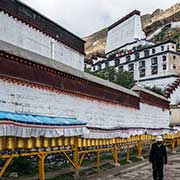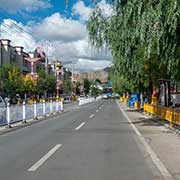Photos of Shigatse: the Tashi Lhunpo Monastery, Tibet
Shigatse: the Tashi Lhunpo Monastery
Shigatse, until recently the second-largest city of Tibet, is about 280 kilometres southwest of Lhasa. It is home to the Tashi Lhunpo Monastery, traditionally the seat of the Panchen Lama. one of the most important figures in the Gelug Tibetan Buddhist tradition, with its spiritual authority second only to the Dalai Lama. The Tashi Lhunpo Monastery was founded in 1447 by Gedun Drupa, who is considered posthumously to have been the First Dalai Lama. The monastery is located on a hill in the centre of Shigatse. Outside its walls, a “lingkhor” (sacred path) is where pilgrims circumambulate, walking around it, turning the prayer wheels as they go.
you may then send it as a postcard if you wish.
During the disastrous Chinese Cultural Revolution, two-thirds of the buildings in the monastery were destroyed, although those were mainly the residences for the 4,000 monks who used to live there. In 1966, Red Guards led a crowd to break statues, burn scriptures, open the stupas containing the relics of the 5th to 9th Panchen Lamas, and throw them in the river. Some of those remains were saved by locals, and in 1985, Choekyi Gyaltsen, 10th Panchen Lama, began the construction of a new chorten or stupa to house them and honour his predecessors. The stupa was finally consecrated on 22 January 1989, just six days before he died aged fifty-one at Tashi Lhunpo. “It was as if he was saying now he could rest.”
The monastery is the traditional seat of successive Panchen Lamas (meaning “Great Scholar”); they are considered incarnations of Amitābha (“Infinite Light”), the principal Buddha of Pure Land Buddhism, a branch of Mahayana Buddhism. The Dalai Lama and Panchen Lama are closely connected, and each participates in the process of recognising the other’s reincarnations. The current 11th Panchen Lama is Gedhun Choekyi Nyima, who was, at age 6, on 14 May 1995 recognised by the 14th Dalai Lama. Chadrel Rinpoche, the Head Khenpo (a high Buddhist scholar) of Tashi Lunpo Monastery, who had been appointed as the deputy head of the Chinese government’s Panchen Lama search committee, had been secretly communicating with the 14th Dalai Lama and others and was forcibly detained upon the news that Gedhun Choekyi Nyima had been recognised as the 11th Panchen Lama. Three days later, the boy was kidnapped by the Chinese government and his family was taken into custody.
The Chinese government instead named Gyaincain Norbu as the 11th Panchen Lama. This has been widely rejected by Buddhists in Tibet and abroad; Gedhun Choekyi Nyima has never been publicly seen since 1995; he remains forcibly detained by the Chinese government, along with his family, in an undisclosed location. Chadrel Rinpoche was sentenced by the “Shigatse Intermediate People’s Court” to six year’s imprisonment and sentenced to three year’s deprivation of political rights for “plotting to split the country” or “separatism” and for “revealing state secrets”. His present location is also unknown; there are unconfirmed reports he died from poison in 2011.
Gyaincain (Gyaltsen) Norbu, the Chinese-approved 11th Panchen Lama (unrecognised by the 14th Dalai Lama and the Tibetan diaspora) was born on 13 February 1990 in northern Tibet, but lived in Beijing during his early childhood and was educated in the Chinese way. He was selected by the Chinese government’s selection using the Golden Urn, a method of drawing by lots, introduced during the Qing dynasty, in which the emperor or his officials would have the final say. He was enthroned as Panchen Lama Chökyi Gyalpo in November/December 1995 at age five in Tashilhunpo Monastery; since then, he studied Tibetan Buddhism, Tibetan language, sutra, and logic, but spent most of his later childhood studying Buddhism in Beijing. He has since assumed the full functions of Panchen Lama and occasionally visits Tashi Lhunpo Monastery in Shigatse.


